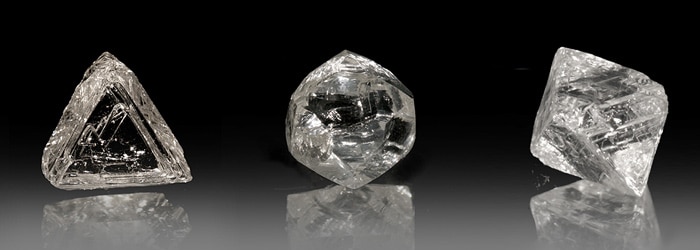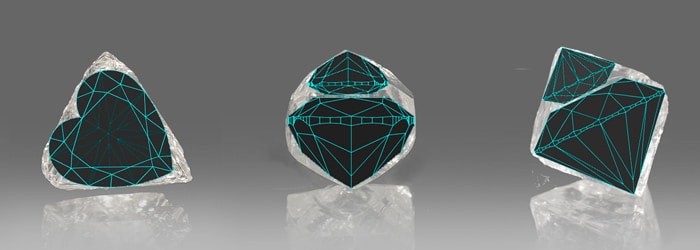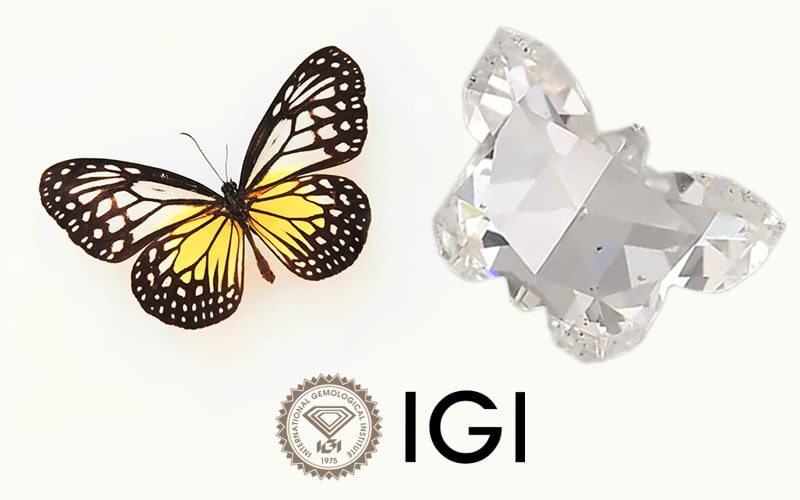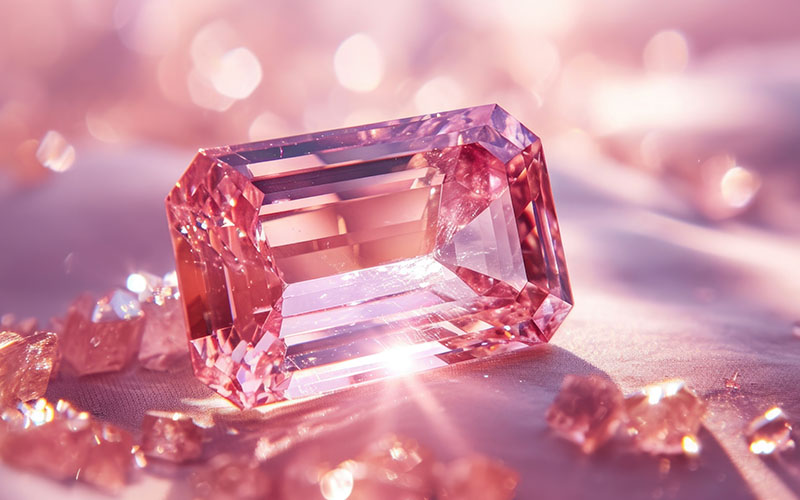Round brilliant, cushion, and other diamond shapes with depth are historically most popular because they’re both aesthetically pleasing and economically practical. Flat shapes with little depth are not as common, which is why we wanted to spotlight these creative, rarely seen diamonds.
Our thanks to the team at Jodhani Brothers for permission to share the first three shapes featured. See JB on Instagram.
IGI: Rare Natural Diamond Shapes
Carat and dimension details
- 0.59 ct ‘Butterfly’ Mixed Cut, 6.79 x 4.65 x 2.26 mm
- 0.54 ct ‘Ganpati’ Free Form Cut, 7.45 x 5.34 x 1.87 mm
- 0.71 ct ‘Car’ Mixed Cut, 7.85 x 5.27 x 1.89 mm
- 2.29 ct ‘Turtle’ Mixed Cut, 11.28 x 6.96 x 4.61 mm
Why are flat diamond shapes rare?
Most rough diamond crystals form as octahedrons or dodecahedrons. Natural diamond rough is precious so diamond producers logically tend to plan shapes which maximize the shape of the rough crystal. The reason most diamonds are round brilliant cut are because producers can frequently coax two round brilliants from a single unbroken rough crystal.
Does flat diamond rough exist?
Yes. “Cleavages” can be flat. These are pieces of rough which were originally octahedrons or dodecahedrons, but were broken (or cleaved) at some point. It could have happened billions of years ago or more recently, during extraction or the manufacturing process.
There are also “twinned crystals,” which are natural flat, triangle-shaped diamond crystals known as macles. Twinned crystals are notoriously challenging to fashion because of an internal change in growth direction where they initially joined. Diamond cutters exercise great caution along this “twinning line” since the inadvertent release of strain accumulated over eons of formation could cause the stone to fracture.

Rough diamond planning
Since macles have a flat geometry, compared to typical untwinned dodecahedral and octahedral diamond crystals, they’re treated differently in planning.

Their triangular outlines and low profiles make macles well-suited for producing shallow shapes, such as the heart or the rare, creative shapes seen above. Deeper crystals are typically used for producing round brilliants, cushions, princess-cuts, etc. Macles are also useful for producing trilliants, baguettes, lozenges, kites, etc.

Subscribe to IGI Instagram for more posts.




